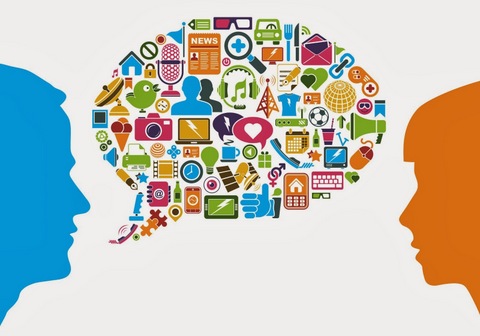When you talk to a person, their tone, their words, and their body language affects how you react to them. I’d definitely pay more attention to someone talking about stocks if they used an animated voice and hand gestures rather than someone droning on about aliens in a monotone voice. This is what we refer to as rhetoric. Not only does it rely on the speaker and how they present themselves, but it also depends on the audience. If someone yells at you about how much they hate Marvel movies when you’re clearly wearing an Avengers t-shirt, you probably won’t listen.
And conversations don’t just occur in person. Digital media also involve conversations between content and the audience. Rhetoric contributes to how people interact with things in the digital world. By analyzing the rhetorical strategies that certain digital media use, we can learn more about what draws people in and what doesn’t. Maybe we can even learn about how our behavior and reactions are affected by digital media.
Take, for example, the CNN website.
As most of us know, CNN provides news for and about the United States and the world. News today is consumed in a different fashion than it has been in the past. Social media has definitely affected how people interact with current events. With videos and short headlines, I can learn about what global catastrophe is currently occurring in less than five minutes (without having to read an article). So, official news websites have to adjust to this new mode of consumption.

The CNN website draws on the nostalgia associated with newspapers and adapts it to a new era of information through the website’s visuals. The site sticks with the classic black and white theme, except when it highlights certain information in bright red.
The home page includes large photos paired with larger headlines, with smaller, related headlines underneath. Convenient, right? I can go down all the rabbit holes I want, or I can glance at the site and move on.
Although it carries the memory of newspapers, the CNN website also draws attention to the fact that it is a digital piece of media. It has many categories (US, World, Politics, Entertainment, etc.) across the top of the site. So, if you want to learn about light-hearted celebrity gossip instead of the impending doom of climate change, you are free to do so. We have so much information at our fingertips that it can be a little bit overwhelming, which is probably why many people like the ability to pick and choose. And if you don’t want to read a single article, near the bottom of the website, there are galleries of photos and videos.
Another interesting rhetorical decision on the website is the small “trending” section right before the headlines on the home page. It contains all the topics that are the most popular or the most relevant. That way, readers can be up to date on current events without sorting through all the different kinds of information on the site.
At the bottom of the website, there’s a section for Paid Partner Content. There are different company names with links to their websites, as well as articles about those companies. Here, the site seems to suggest that if you align yourself with CNN, they’ll write articles promoting your company. Not only does the website cater to individual readers, like you and me, but it also provides recognition to established companies.
So, what does this mean?
Basically, it’s an example of how digital media attracts audiences to buy their merchandise or read their articles. The rhetoric of these digital media shed light on how technology has changed the way that we interact with things. We get our news in bite-sized pieces. We get drawn in by things we recognize, like newspapers. Our own behaviors reflect and shape the increasing digital world.
Analyzing the rhetoric of digital media also shows how media itself has evolved. It’s adapted to suit our changing requirements as well as the new directions of our technological society.

